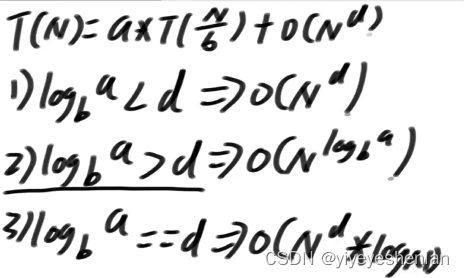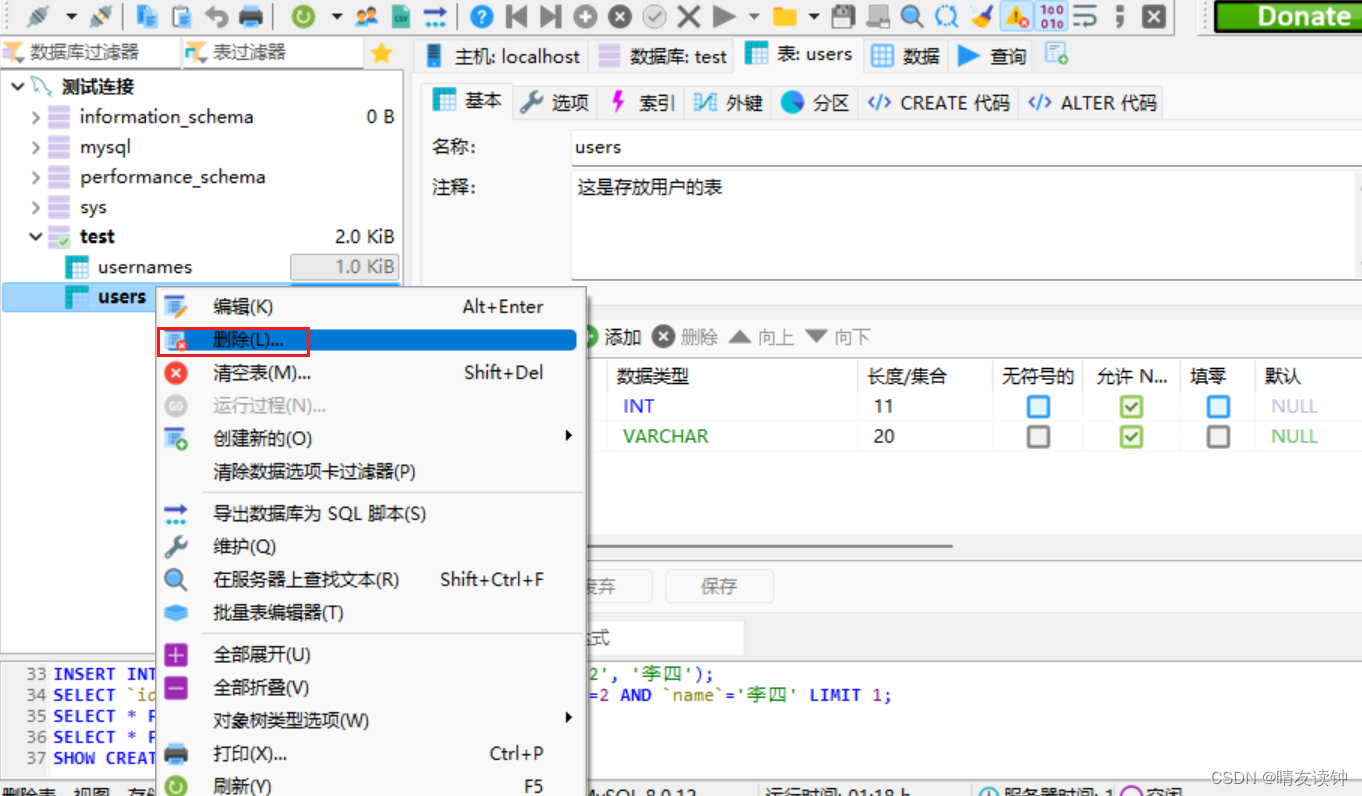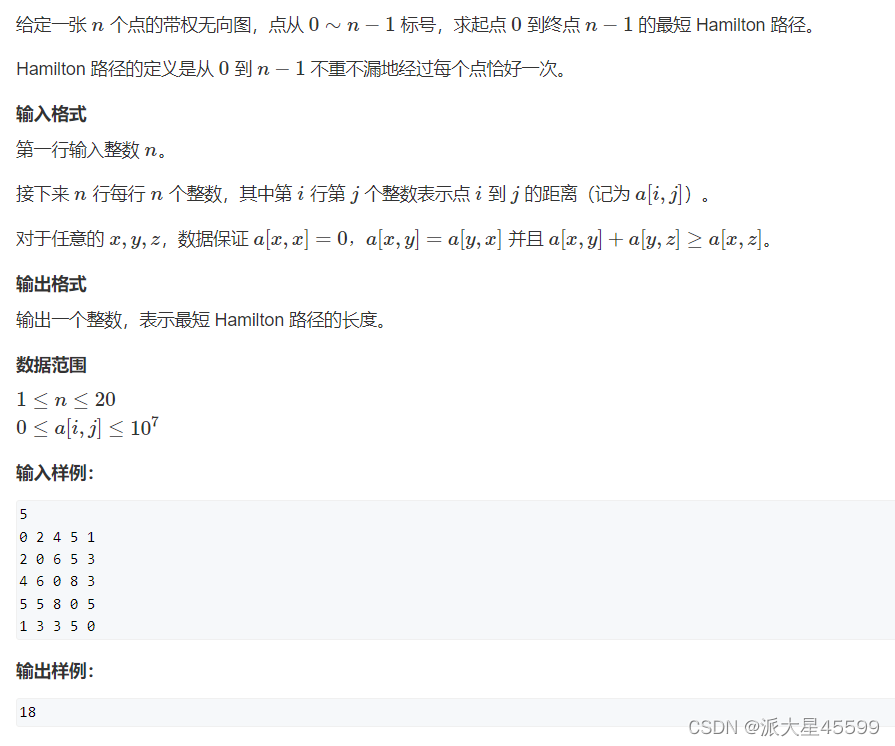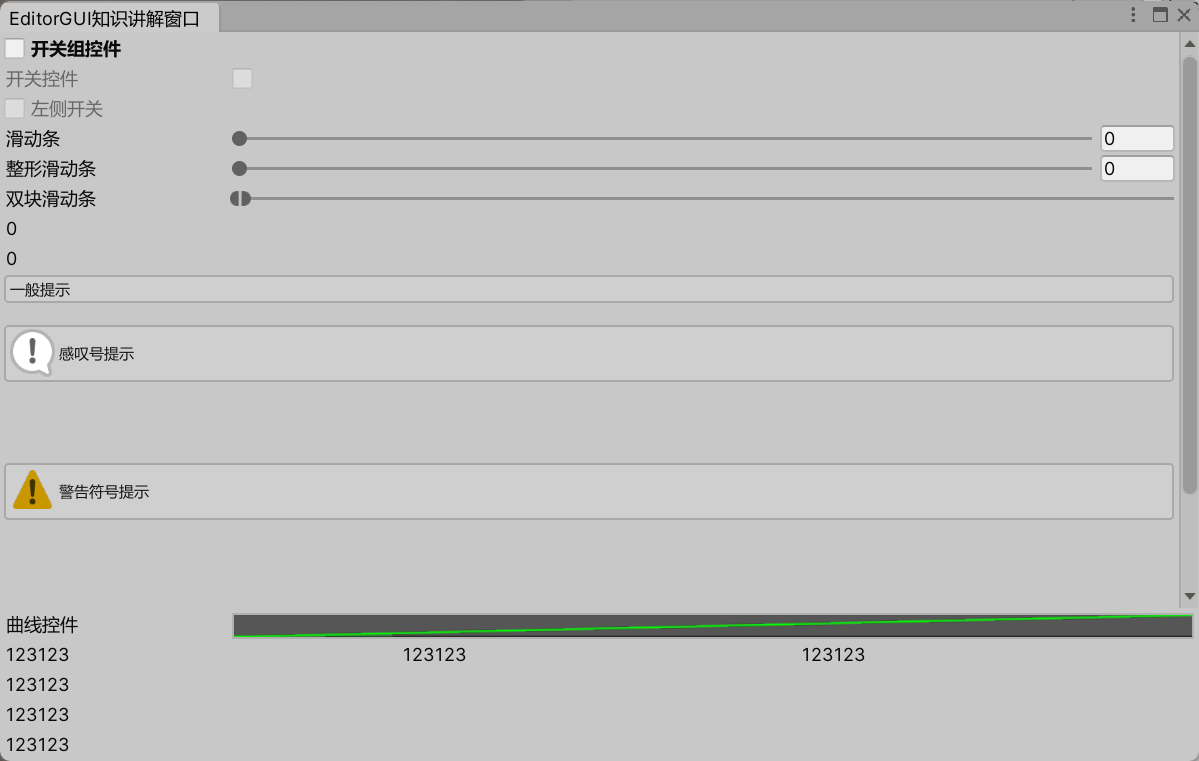单双链表
1.单链表双链表如何反转
import java.util.ArrayList;
import java.util.List;public class Code01_ReverseList {public static class Node {public int value;public Node next;public Node(int data) {value = data;}}public static class DoubleNode {public int value;public DoubleNode last;public DoubleNode next;public DoubleNode(int data) {value = data;}}// head// a -> b -> c -> null// c -> b -> a -> nullpublic static Node reverseLinkedList(Node head) {Node pre = null;Node next = null;while (head != null) {next = head.next;head.next = pre;pre = head;head = next;}return pre;}public static DoubleNode reverseDoubleList(DoubleNode head) {DoubleNode pre = null;DoubleNode next = null;while (head != null) {next = head.next;head.next = pre;head.last = next;pre = head;head = next;}return pre;}public static Node testReverseLinkedList(Node head) {if (head == null) {return null;}ArrayList<Node> list = new ArrayList<>();while (head != null) {list.add(head);head = head.next;}list.get(0).next = null;int N = list.size();for (int i = 1; i < N; i++) {list.get(i).next = list.get(i - 1);}return list.get(N - 1);}public static DoubleNode testReverseDoubleList(DoubleNode head) {if (head == null) {return null;}ArrayList<DoubleNode> list = new ArrayList<>();while (head != null) {list.add(head);head = head.next;}list.get(0).next = null;DoubleNode pre = list.get(0);int N = list.size();for (int i = 1; i < N; i++) {DoubleNode cur = list.get(i);cur.last = null;cur.next = pre;pre.last = cur;pre = cur;}return list.get(N - 1);}// for testpublic static Node generateRandomLinkedList(int len, int value) {int size = (int) (Math.random() * (len + 1));if (size == 0) {return null;}size--;Node head = new Node((int) (Math.random() * (value + 1)));Node pre = head;while (size != 0) {Node cur = new Node((int) (Math.random() * (value + 1)));pre.next = cur;pre = cur;size--;}return head;}// for testpublic static DoubleNode generateRandomDoubleList(int len, int value) {int size = (int) (Math.random() * (len + 1));if (size == 0) {return null;}size--;DoubleNode head = new DoubleNode((int) (Math.random() * (value + 1)));DoubleNode pre = head;while (size != 0) {DoubleNode cur = new DoubleNode((int) (Math.random() * (value + 1)));pre.next = cur;cur.last = pre;pre = cur;size--;}return head;}// for testpublic static List<Integer> getLinkedListOriginOrder(Node head) {List<Integer> ans = new ArrayList<>();while (head != null) {ans.add(head.value);head = head.next;}return ans;}// for testpublic static boolean checkLinkedListReverse(List<Integer> origin, Node head) {for (int i = origin.size() - 1; i >= 0; i--) {if (!origin.get(i).equals(head.value)) {return false;}head = head.next;}return true;}// for testpublic static List<Integer> getDoubleListOriginOrder(DoubleNode head) {List<Integer> ans = new ArrayList<>();while (head != null) {ans.add(head.value);head = head.next;}return ans;}// for testpublic static boolean checkDoubleListReverse(List<Integer> origin, DoubleNode head) {DoubleNode end = null;for (int i = origin.size() - 1; i >= 0; i--) {if (!origin.get(i).equals(head.value)) {return false;}end = head;head = head.next;}for (int i = 0; i < origin.size(); i++) {if (!origin.get(i).equals(end.value)) {return false;}end = end.last;}return true;}// for testpublic static void main(String[] args) {int len = 50;int value = 100;int testTime = 100000;System.out.println("test begin!");for (int i = 0; i < testTime; i++) {Node node1 = generateRandomLinkedList(len, value);List<Integer> list1 = getLinkedListOriginOrder(node1);node1 = reverseLinkedList(node1);if (!checkLinkedListReverse(list1, node1)) {System.out.println("Oops1!");}Node node2 = generateRandomLinkedList(len, value);List<Integer> list2 = getLinkedListOriginOrder(node2);node2 = testReverseLinkedList(node2);if (!checkLinkedListReverse(list2, node2)) {System.out.println("Oops2!");}DoubleNode node3 = generateRandomDoubleList(len, value);List<Integer> list3 = getDoubleListOriginOrder(node3);node3 = reverseDoubleList(node3);if (!checkDoubleListReverse(list3, node3)) {System.out.println("Oops3!");}DoubleNode node4 = generateRandomDoubleList(len, value);List<Integer> list4 = getDoubleListOriginOrder(node4);node4 = reverseDoubleList(node4);if (!checkDoubleListReverse(list4, node4)) {System.out.println("Oops4!");}}System.out.println("test finish!");}}2.把定值都删除掉
是n就跳过,不是n next指向
public class Code02_DeleteGivenValue {public static class Node {public int value;public Node next;public Node(int data) {this.value = data;}}// head = removeValue(head, 2);public static Node removeValue(Node head, int num) {// head来到第一个不需要删的位置while (head != null) {if (head.value != num) {break;}head = head.next;}// 1 ) head == null// 2 ) head != nullNode pre = head;Node cur = head;while (cur != null) {if (cur.value == num) {pre.next = cur.next;} else {pre = cur;}cur = cur.next;}return head;}}
队列跟栈
双链表实现
import java.util.LinkedList;
import java.util.Queue;
import java.util.Stack;public class Code03_DoubleEndsQueueToStackAndQueue {public static class Node<T> {public T value;public Node<T> last;public Node<T> next;public Node(T data) {value = data;}}public static class DoubleEndsQueue<T> {public Node<T> head;public Node<T> tail;public void addFromHead(T value) {Node<T> cur = new Node<T>(value);if (head == null) {head = cur;tail = cur;} else {cur.next = head;head.last = cur;head = cur;}}public void addFromBottom(T value) {Node<T> cur = new Node<T>(value);if (head == null) {head = cur;tail = cur;} else {cur.last = tail;tail.next = cur;tail = cur;}}public T popFromHead() {if (head == null) {return null;}Node<T> cur = head;if (head == tail) {head = null;tail = null;} else {head = head.next;cur.next = null;head.last = null;}return cur.value;}public T popFromBottom() {if (head == null) {return null;}Node<T> cur = tail;if (head == tail) {head = null;tail = null;} else {tail = tail.last;tail.next = null;cur.last = null;}return cur.value;}public boolean isEmpty() {return head == null;}}public static class MyStack<T> {private DoubleEndsQueue<T> queue;public MyStack() {queue = new DoubleEndsQueue<T>();}public void push(T value) {queue.addFromHead(value);}public T pop() {return queue.popFromHead();}public boolean isEmpty() {return queue.isEmpty();}}public static class MyQueue<T> {private DoubleEndsQueue<T> queue;public MyQueue() {queue = new DoubleEndsQueue<T>();}public void push(T value) {queue.addFromHead(value);}public T poll() {return queue.popFromBottom();}public boolean isEmpty() {return queue.isEmpty();}}public static boolean isEqual(Integer o1, Integer o2) {if (o1 == null && o2 != null) {return false;}if (o1 != null && o2 == null) {return false;}if (o1 == null && o2 == null) {return true;}return o1.equals(o2);}public static void main(String[] args) {int oneTestDataNum = 100;int value = 10000;int testTimes = 100000;for (int i = 0; i < testTimes; i++) {MyStack<Integer> myStack = new MyStack<>();MyQueue<Integer> myQueue = new MyQueue<>();Stack<Integer> stack = new Stack<>();Queue<Integer> queue = new LinkedList<>();for (int j = 0; j < oneTestDataNum; j++) {int nums = (int) (Math.random() * value);if (stack.isEmpty()) {myStack.push(nums);stack.push(nums);} else {if (Math.random() < 0.5) {myStack.push(nums);stack.push(nums);} else {if (!isEqual(myStack.pop(), stack.pop())) {System.out.println("oops!");}}}int numq = (int) (Math.random() * value);if (stack.isEmpty()) {myQueue.push(numq);queue.offer(numq);} else {if (Math.random() < 0.5) {myQueue.push(numq);queue.offer(numq);} else {if (!isEqual(myQueue.poll(), queue.poll())) {System.out.println("oops!");}}}}}System.out.println("finish!");}}
数组实现
public class Code04_RingArray {public static class MyQueue {private int[] arr;private int pushi;// endprivate int polli;// beginprivate int size;private final int limit;public MyQueue(int limit) {arr = new int[limit];pushi = 0;polli = 0;size = 0;this.limit = limit;}public void push(int value) {if (size == limit) {throw new RuntimeException("队列满了,不能再加了");}size++;arr[pushi] = value;pushi = nextIndex(pushi);}public int pop() {if (size == 0) {throw new RuntimeException("队列空了,不能再拿了");}size--;int ans = arr[polli];polli = nextIndex(polli);return ans;}public boolean isEmpty() {return size == 0;}// 如果现在的下标是i,返回下一个位置private int nextIndex(int i) {return i < limit - 1 ? i + 1 : 0;}}}
实现一个特殊的栈,在基本功能基础上,再实现返回栈中最小元素的功能
1.pop,push,getMin,操作的时间复杂度都是O(1)
2.设计的栈类型可以使用现成的栈结构
同步压入,同步弹出
import java.util.Stack;public class Code05_GetMinStack {public static class MyStack1 {private Stack<Integer> stackData;private Stack<Integer> stackMin;public MyStack1() {this.stackData = new Stack<Integer>();this.stackMin = new Stack<Integer>();}public void push(int newNum) {if (this.stackMin.isEmpty()) {this.stackMin.push(newNum);} else if (newNum <= this.getmin()) {this.stackMin.push(newNum);}this.stackData.push(newNum);}public int pop() {if (this.stackData.isEmpty()) {throw new RuntimeException("Your stack is empty.");}int value = this.stackData.pop();if (value == this.getmin()) {this.stackMin.pop();}return value;}public int getmin() {if (this.stackMin.isEmpty()) {throw new RuntimeException("Your stack is empty.");}return this.stackMin.peek();}}public static class MyStack2 {private Stack<Integer> stackData;private Stack<Integer> stackMin;public MyStack2() {this.stackData = new Stack<Integer>();this.stackMin = new Stack<Integer>();}public void push(int newNum) {if (this.stackMin.isEmpty()) {this.stackMin.push(newNum);} else if (newNum < this.getmin()) {this.stackMin.push(newNum);} else {int newMin = this.stackMin.peek();this.stackMin.push(newMin);}this.stackData.push(newNum);}public int pop() {if (this.stackData.isEmpty()) {throw new RuntimeException("Your stack is empty.");}this.stackMin.pop();return this.stackData.pop();}public int getmin() {if (this.stackMin.isEmpty()) {throw new RuntimeException("Your stack is empty.");}return this.stackMin.peek();}}public static void main(String[] args) {MyStack1 stack1 = new MyStack1();stack1.push(3);System.out.println(stack1.getmin());stack1.push(4);System.out.println(stack1.getmin());stack1.push(1);System.out.println(stack1.getmin());System.out.println(stack1.pop());System.out.println(stack1.getmin());System.out.println("=============");MyStack1 stack2 = new MyStack1();stack2.push(3);System.out.println(stack2.getmin());stack2.push(4);System.out.println(stack2.getmin());stack2.push(1);System.out.println(stack2.getmin());System.out.println(stack2.pop());System.out.println(stack2.getmin());}}
如何使用栈结构实现队列结构
import java.util.Stack;public class Code06_TwoStacksImplementQueue {public static class TwoStacksQueue {public Stack<Integer> stackPush;public Stack<Integer> stackPop;public TwoStacksQueue() {stackPush = new Stack<Integer>();stackPop = new Stack<Integer>();}// push栈向pop栈倒入数据private void pushToPop() {if (stackPop.empty()) {while (!stackPush.empty()) {stackPop.push(stackPush.pop());}}}public void add(int pushInt) {stackPush.push(pushInt);pushToPop();}public int poll() {if (stackPop.empty() && stackPush.empty()) {throw new RuntimeException("Queue is empty!");}pushToPop();return stackPop.pop();}public int peek() {if (stackPop.empty() && stackPush.empty()) {throw new RuntimeException("Queue is empty!");}pushToPop();return stackPop.peek();}}public static void main(String[] args) {TwoStacksQueue test = new TwoStacksQueue();test.add(1);test.add(2);test.add(3);System.out.println(test.peek());System.out.println(test.poll());System.out.println(test.peek());System.out.println(test.poll());System.out.println(test.peek());System.out.println(test.poll());}}
如何使用队列结构实现栈结构
import java.util.LinkedList;
import java.util.Queue;
import java.util.Stack;public class Code07_TwoQueueImplementStack {public static class TwoQueueStack<T> {public Queue<T> queue;public Queue<T> help;public TwoQueueStack() {queue = new LinkedList<>();help = new LinkedList<>();}public void push(T value) {queue.offer(value);}public T poll() {while (queue.size() > 1) {help.offer(queue.poll());}T ans = queue.poll();Queue<T> tmp = queue;queue = help;help = tmp;return ans;}public T peek() {while (queue.size() > 1) {help.offer(queue.poll());}T ans = queue.poll();help.offer(ans);Queue<T> tmp = queue;queue = help;help = tmp;return ans;}public boolean isEmpty() {return queue.isEmpty();}}public static void main(String[] args) {System.out.println("test begin");TwoQueueStack<Integer> myStack = new TwoQueueStack<>();Stack<Integer> test = new Stack<>();int testTime = 1000000;int max = 1000000;for (int i = 0; i < testTime; i++) {if (myStack.isEmpty()) {if (!test.isEmpty()) {System.out.println("Oops");}int num = (int) (Math.random() * max);myStack.push(num);test.push(num);} else {if (Math.random() < 0.25) {int num = (int) (Math.random() * max);myStack.push(num);test.push(num);} else if (Math.random() < 0.5) {if (!myStack.peek().equals(test.peek())) {System.out.println("Oops");}} else if (Math.random() < 0.75) {if (!myStack.poll().equals(test.pop())) {System.out.println("Oops");}} else {if (myStack.isEmpty() != test.isEmpty()) {System.out.println("Oops");}}}}System.out.println("test finish!");}}
Master 公式求递推的时间复杂度
前提,子问题规模一致,(比如,子问题是分两个二分之N区间分别求最大值,可以Master,若分为三分之N那就不行)
公式:T(N)=a*T(N/b)+O(N的d次方)
得到abd之后

求最大值
public class Code08_GetMax {// 求arr中的最大值public static int getMax(int[] arr) {return process(arr, 0, arr.length - 1);}// arr[L..R]范围上求最大值 L ... R Npublic static int process(int[] arr, int L, int R) {// arr[L..R]范围上只有一个数,直接返回,base caseif (L == R) { return arr[L];}// L...R 不只一个数// mid = (L + R) / 2int mid = L + ((R - L) >> 1); // 中点 1int leftMax = process(arr, L, mid);int rightMax = process(arr, mid + 1, R);return Math.max(leftMax, rightMax);}}
哈希
import java.util.HashMap;
import java.util.HashSet;
import java.util.TreeMap;public class HashMapAndSortedMap {public static class Node {public int value;public Node(int v) {value = v;}}public static class Zuo {public int value;public Zuo(int v) {value = v;}}public static void main(String[] args) {HashMap<Integer, String> test = new HashMap<>();Integer a = 19000000;Integer b = 19000000;System.out.println(a == b);test.put(a, "我是3");System.out.println(test.containsKey(b));Zuo z1 = new Zuo(1);Zuo z2 = new Zuo(1);HashMap<Zuo, String> test2 = new HashMap<>();test2.put(z1, "我是z1");System.out.println(test2.containsKey(z2));// UnSortedMapHashMap<Integer, String> map = new HashMap<>();map.put(1000000, "我是1000000");map.put(2, "我是2");map.put(3, "我是3");map.put(4, "我是4");map.put(5, "我是5");map.put(6, "我是6");map.put(1000000, "我是1000001");System.out.println(map.containsKey(1));System.out.println(map.containsKey(10));System.out.println(map.get(4));System.out.println(map.get(10));map.put(4, "他是4");System.out.println(map.get(4));map.remove(4);System.out.println(map.get(4));// keyHashSet<String> set = new HashSet<>();set.add("abc");set.contains("abc");set.remove("abc");// 哈希表,增、删、改、查,在使用时,O(1)System.out.println("=====================");Integer c = 100000;Integer d = 100000;System.out.println(c.equals(d));Integer e = 127; // - 128 ~ 127Integer f = 127;System.out.println(e == f);HashMap<Node, String> map2 = new HashMap<>();Node node1 = new Node(1);Node node2 = node1;map2.put(node1, "我是node1");map2.put(node2, "我是node1");System.out.println(map2.size());System.out.println("======================");// TreeMap 有序表:接口名// 红黑树、avl、sb树、跳表// O(logN)System.out.println("有序表测试开始");TreeMap<Integer, String> treeMap = new TreeMap<>();treeMap.put(3, "我是3");treeMap.put(4, "我是4");treeMap.put(8, "我是8");treeMap.put(5, "我是5");treeMap.put(7, "我是7");treeMap.put(1, "我是1");treeMap.put(2, "我是2");System.out.println(treeMap.containsKey(1));System.out.println(treeMap.containsKey(10));System.out.println(treeMap.get(4));System.out.println(treeMap.get(10));treeMap.put(4, "他是4");System.out.println(treeMap.get(4));// treeMap.remove(4);System.out.println(treeMap.get(4));System.out.println("新鲜:");System.out.println(treeMap.firstKey());System.out.println(treeMap.lastKey());// <= 4System.out.println(treeMap.floorKey(4));// >= 4System.out.println(treeMap.ceilingKey(4));// O(logN)}}











